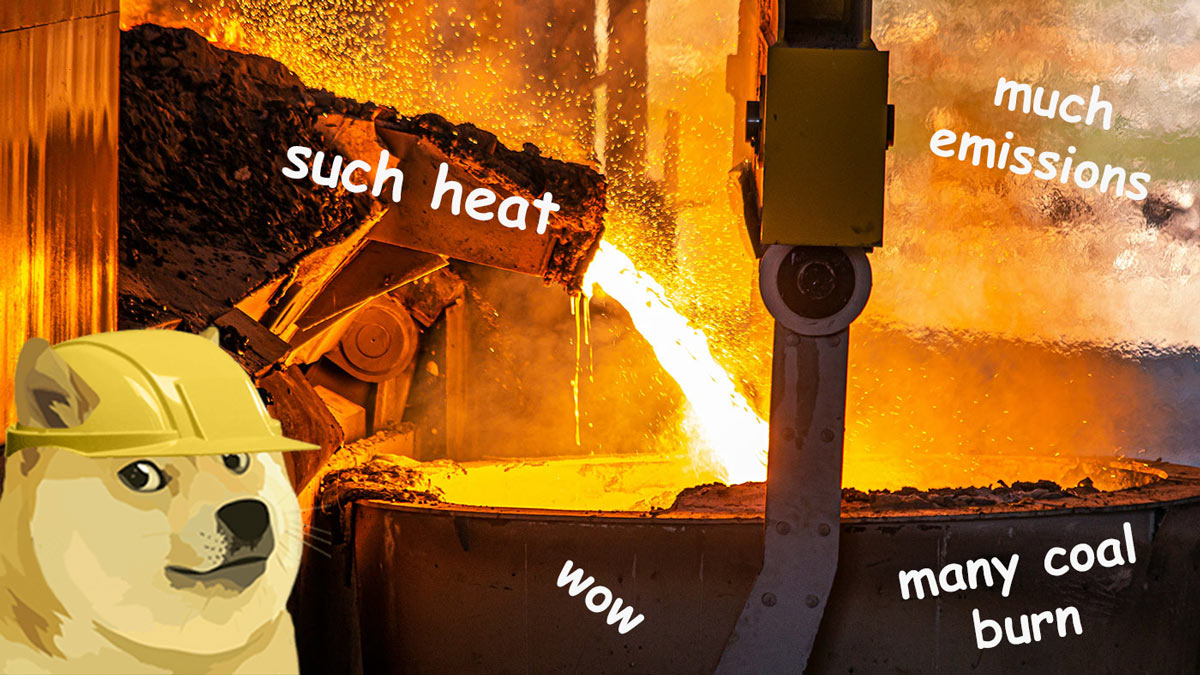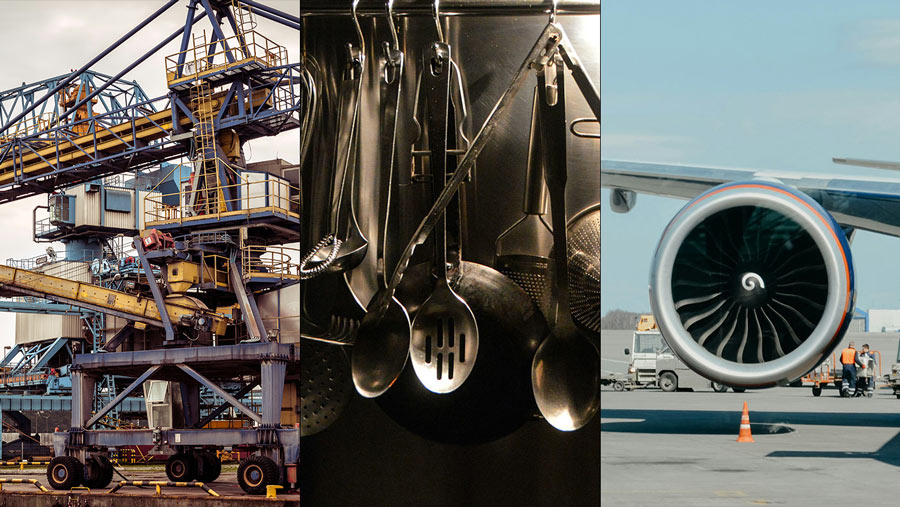Steelmaking and carbon emissions

In my previous post, I described how an EV and rooftop solar have lowered our reliance on grid power and fossil fuels. Electrifying is a pretty straightforward path to curb our carbon emissions. That being said, home electrification will not solve climate change on its own.
Fossil fuels are used in so many places, that almost any modern product - food, clothes, tools - comes with its own carbon footprint. CO₂ emitted when we produce stuff is often referred to as embedded emissions. Limiting those is a big part of our journey towards net-zero.
Steel
A good example to illustrate the concept of embedded emissions is steel.
Steel is everywhere in our world. Steel beams are used as structural elements of buildings, bridges and other infrastructure. Most heavy equipment and machinery is made of steel. It is used as material in car chassis, jet engines and ship hulls. Finally, lots of tools and utensils, such as wrenches, hammers, forks and knives, are also made of steel.

Steel is everywhere, but it is inanimate and often invisible, so most of us don't think about it, and it's rarely a conversation topic. Let's take a look at how steel is produced then.
Production
There are two main ways of making steel: from raw materials, which is called "primary" and through recycling, referred to as "secondary" steelmaking.
Basic Oxygen Furnace - BOF
In the primary process, iron ore - the raw material - is smelted inside a blast furnace. The resulting molten material is called "pig iron" and it is not unlike lava coming out of a volcano. The temperature necessary for this is very high (1600°C) which it typically achieved by burning coal.
In the next step, pig iron is tapped from the bottom of the furnace and transferred to something called a Basic Oxygen Furnace (BOF). In a BOF, oxygen is blown through the pig iron to reduce its carbon content. The result is a purified iron, which we call steel.
This entire process results in high CO₂ emissions which occur when coal is burned to heat up the furnace and then when the carbon extracted from the pig iron is released into the atmosphere.
Electric Arc Furnace - EAF
Electric Arc Furnace is an alternative method of steelmaking that involves melting scrap metal using electric energy from high-current electric arcs. This approach basically boils down to recycling. Since the steel scrap already has a low level of carbon and because electricity is used to melt it, EAF is more climate friendly than BOF.
Its environmental impact is mostly dependent on the source of electricity used in the process. If it comes from wind or solar, the whole process could be quite clean.
The global yearly production of steel is roughly 1.8 Billion Tons (1800 Mt). About 75% of steel is produced from raw materials (BOF). The other 25% is recycled (EAF). China is the world's top producer of steel, while the US is the leader in recycling. 70% of steel produced in America comes from recycling!
Carbon Emissions
As you may have guessed by now, making steel is very energy intensive. One ton of steel produced with BOF requires about 20 Gigajoules of energy (5.5 MWh). EAF looks better as it only requires 4-7 GJ for the same amount (1.1-1.9 MWh).
According to IEA the average carbon emissions intensity of steel production is 1.4t of CO₂ per 1 ton of steel produced. The World Steel Association put this number slightly higher at 1.85t per ton.
The total CO₂ emissions of the steel industry are estimated at around 2600-3500 tons of CO₂ per year, which is 8 to 11% of the total global emissions. It's almost as much as all passenger cars emit in any given year, while the entire aviation industry contributes a mere 2.5%. It's huge!
The climate damage caused car exhausts and airplane engines is common knowledge at this point. The impact of the steel production for cars or airplanes is considerable but far less obvious.
What can you do about it?
As individual consumers, we have limited options available to mitigate industrial emissions. Some of us may choose to limit their consumption, thus limiting demand and emission that go with it, but this is not a solution for everyone.
One action to consider is to delay purchasing an EV, if your old gasoline car still runs fine and if you do not drive it too much. Here's a very interesting research on that topic.
Industrial solutions
Meanwhile, the main arena of the fight for clean steel is at the level of industrial processes. We basically have to figure out how to make steel without all the emissions that come with. That's one of the most difficult problems to solve on our way to net-zero.
If you are like me, you may think that simply using clean electricity to recycle steel in EAF sounds like the best bet. Unfortunately not all steel can be recycled and the growing global demand requires us to produce more of it anyway.
Fortunately, there are some interesting solutions on the horizon. A company called Electra mamnaged to succesfully refine iron ore at low temperatures, eliminating the need for the coal that's used to heat the furnaces. Boston Metal built a solution that uses electricity instead of coal to purify the raw material.
While writing this post, I bumped into this research paper that explores a concept of a "closed loop" where the CO₂ is recycled in the blast furnace. Cool stuff.
Implementing a combination of ideas like that will eventually lead to clean steel, but there will be no overnight success. Instead, we'll see gradual improvements and those will often seem too slow or not impactful enough. History shows however, that "making things better over time" is what humans are exceptionally good at, so I'm optimistic.
Further reading
Canary Media published a fantastic, in-depth cycle on decarbonizing heavy industry, including steelmaking - "The Tough Stuff". It's a lot of information to take and I'm not done reading all of it yet, but it's a great place to learn more about this crucial topic.
If you are in the mood for a book instead, I recommend "How the world works" by professor Vaclav Smil, who is a renowned energy expert. The book is a detailed overview of the world's energy system and this is where I first encountered the concept of embedded emissions.
